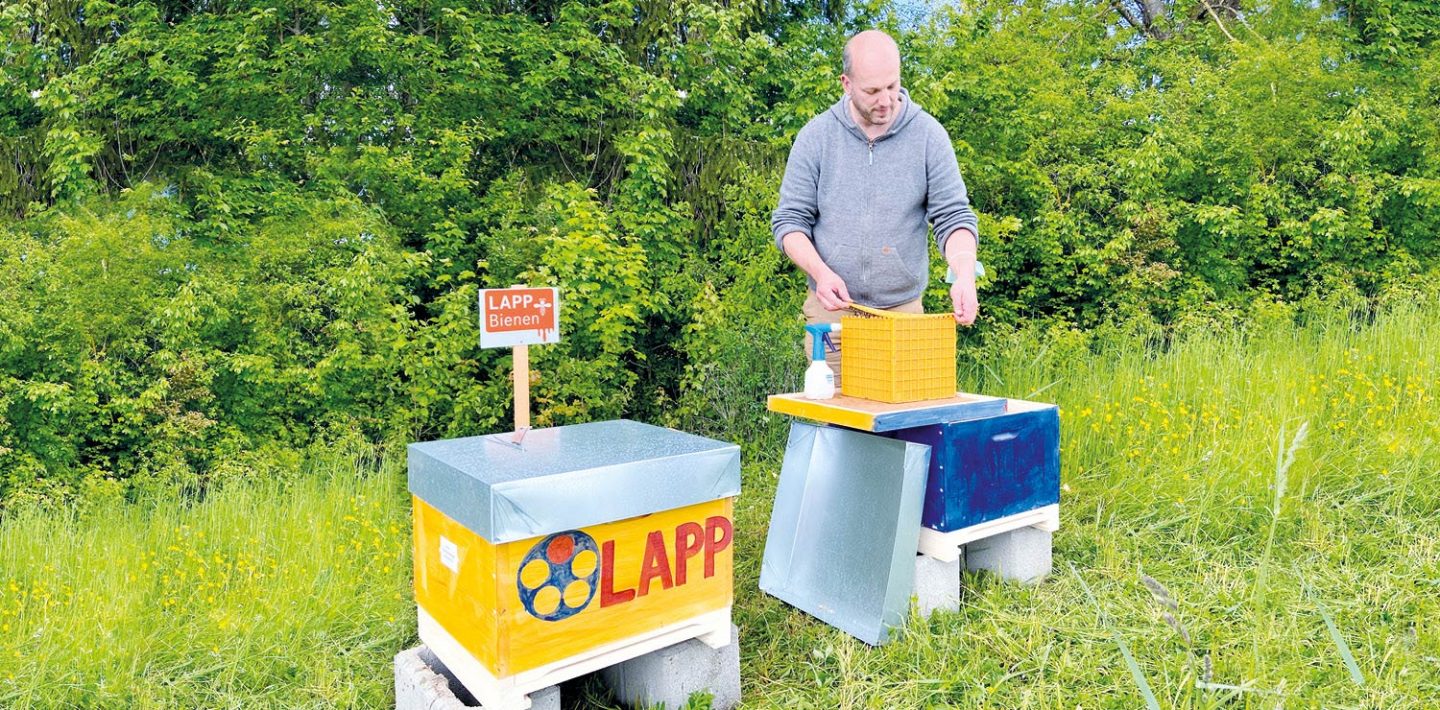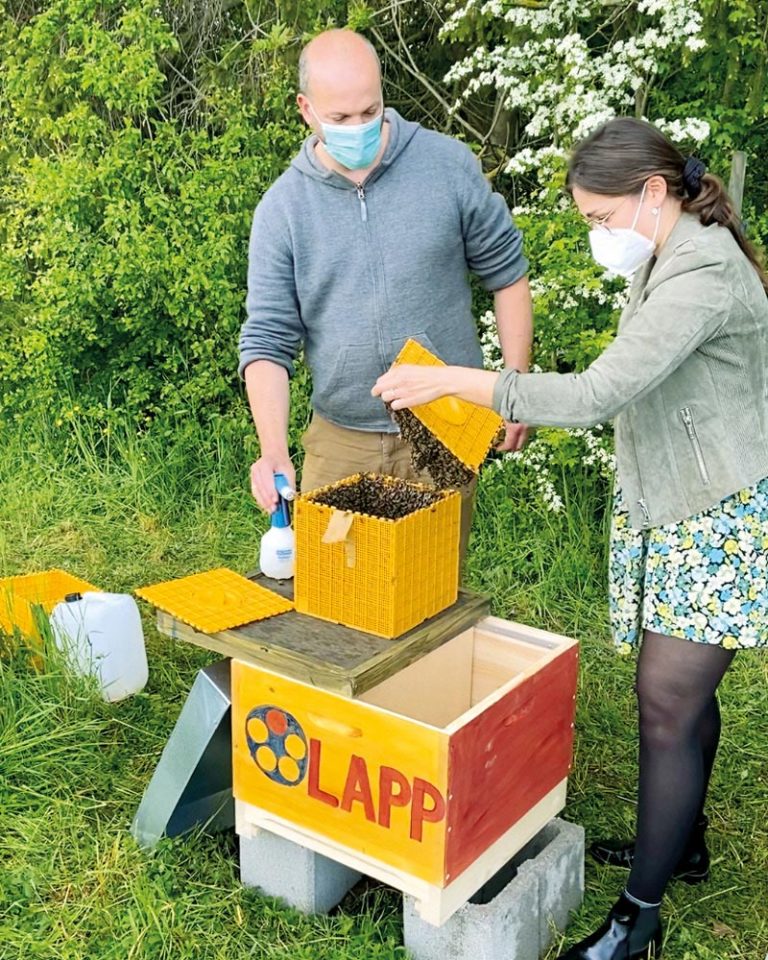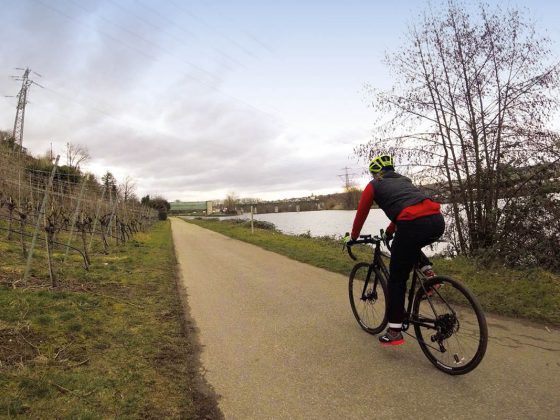
The decline in plant diversity can also be seen in the green spaces surrounding the LAPP company headquarters: “As children, we used to skip through the colourful flower meadows behind our cable plant. Nowadays, there are less and less flowers blooming. We need to counter this. The diversity of plants and animals is extremely important for preserving our ecosystems”, explains Andreas Lapp, Chairman of the Board of Lapp Holding AG.
But what can be done to create a sustainable habitat for bees once again? LAPP also wants to play its part in finding a solution here. In the spring of 2021, on LAPP’s initiative, two bee colonies were settled in a flower meadow behind the Vaihingen/Möhringen industrial park, where the company has its headquarters. With the aid of the more than 40,000 bees living there and modern technology, a pilot project will now also examine the biological diversity in the industrial estate around the company’s headquarters.

This pilot project was devised by the Belgian start-up company BeeOdiversity. They are dedicated to the development of ecological solutions aimed at preserving or restoring biological diversity. In this pilot project, the bees provide the basis for data collection by collecting pollen: by flying to different flowers, the bees collect different types of pollen. A lot of information can be derived from this pollen, such as plant diversity and contamination by environmental pollutants or other substances such as pesticides on the area the bees fly in.
The founders of BeeOdiversity developed a process for analysing the flower pollen collected by bees and deriving recommendations for action on how to increase the number of flourishing plants, and thus create habitat for pollinating insects. The pollen samples are evaluated using a specially developed analysis software.
Up to October of this year, pollen from two LAPP hives will be regularly collected and tested. “The first time we collected the pollen was at the beginning of June, when the robinias, blackberries and cornflowers were still in bloom, and now the linden trees and clover are joining in,” reports Tobias Miltenberger, from the Outdoor Institute for Ecological Beekeeping, who is taking care of both bee populations.
Based on the pollen evaluation by BeeOdiversity, a report on the status quo of biodiversity in the area under study will be produced and recommendations for action for sustainable real estate and land use planning will be issued. Targeted measures, such as greening of building façades or special flower mixtures for green plants, are intended to promote biodiversity in the industrial area – a vital contribution to protecting the environment.
By the way: The hives were artistically decorated by children from the Steppkes day-care centre, where children of LAPP employees are also looked after. However, no honey has been “harvested” yet. “The young bee populations are currently building their own honeycombs. They first need the honey for themselves. And because it’s been so cold and rained so much over the past few weeks, I even had to feed the bees with organic sugar syrup every week”, explains beekeeper Tobias Miltenberger. Thus, we’ll have to wait till next year for honey from the LAPP bees.



